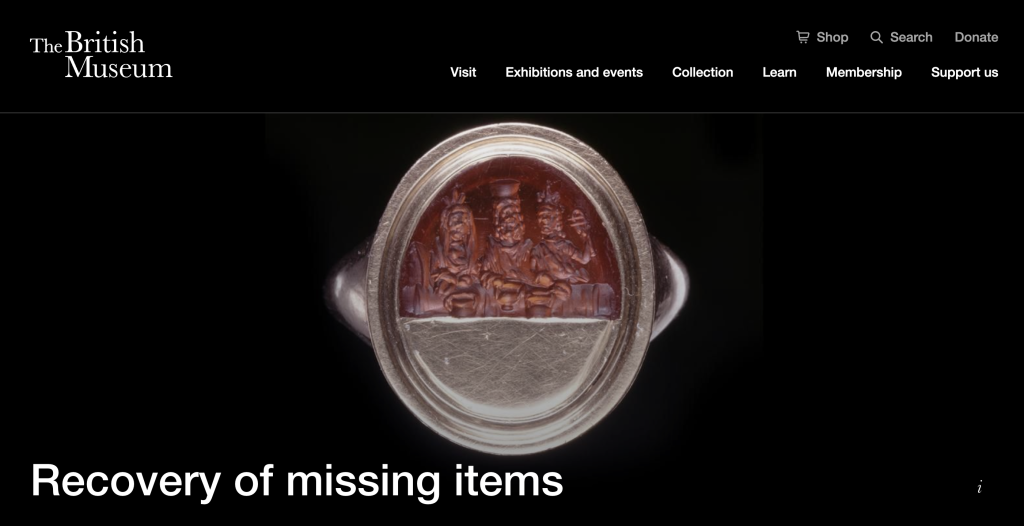The British Museum has taken a bold step in its quest to recover 2,000 stolen items from its collection. In the wake of a shocking scandal involving a senior curator, Peter Higgs, who is suspected of theft, the museum has launched a public appeal. This initiative invites individuals who may have unknowingly possessed or come into contact with these missing objects to report their findings via email.
A Scandal Unearthed
The scandal surrounding the thefts came to light in August when it was revealed that Peter Higgs, a senior curator at the British Museum, was under suspicion for the thefts and subsequently fired. The fallout from this revelation led to the resignation of the museum’s former director, Hartwig Fischer. It was discovered that the museum missed crucial opportunities to thwart the scheme in 2021, thanks to a whistleblower. Sir Mark Jones, the former director of the V&A, has stepped in as the temporary replacement for Fischer.
Behind Closed Doors: The Investigation
Until now, the British Museum had conducted its investigation into the missing items discreetly, in collaboration with London’s Metropolitan Police. The investigative efforts included monitoring the art market and registering the stolen items on the Art Loss Register. These actions have yielded modest success, with 60 pieces returned safely and another 300 identified for imminent return.
Details Concealed for Good Reason
The British Museum has chosen not to disclose all the details regarding the missing items, citing advice from recovery specialists. It is also possible that not every missing item can be listed, as many were never cataloged. Instead, the museum provides a guide outlining the types of missing pieces, primarily ancient gems and jewellry from Greece and Rome.
A Strategic Decision
The Art Loss Register has supported the museum’s decision not to divulge all information about the missing items. This strategy aims to deter individuals who may possess the stolen antiquities from selling them through channels where fewer questions are asked. It also prevents potential attempts to sell items for their material value by melting them down. Currently, the museum has only shared what information it has with members of the antiquities and jewellry trade.
eBay: A Potential Marketplace for Stolen Treasures
Some of the missing artefacts may have ended up on online platforms like eBay, where it is alleged that Peter Higgs listed stolen goods over several years. Shockingly, a piece of Roman jewellry worth up to £50,000 ($60,000) was reportedly sold for a mere $340 ($48) by a seller using the username Sultan1966. This scandal has reignited calls from several nations, including Greece and China, for the repatriation of items in the British Museum’s collection.
Internal Concerns
In a report by London’s Evening Standard, current and former staff members and trustees have shared their insights into the incident. Some expressed concerns about the museum’s management of its inventory. One anonymous source with experience in restitution claims stated, “The fact they don’t know what their inventory is, how the hell can they hold their head up high and say they’re protecting anything at all? It is preposterous.”
Conclusion
As the British Museum navigates this unprecedented crisis, its public appeal for the recovery of stolen artefacts marks a significant step toward addressing the thefts and rectifying the situation. The museum’s ongoing efforts, collaboration with law enforcement, and transparency will play pivotal roles in the recovery and eventual return of these cultural treasures.

Contributor





